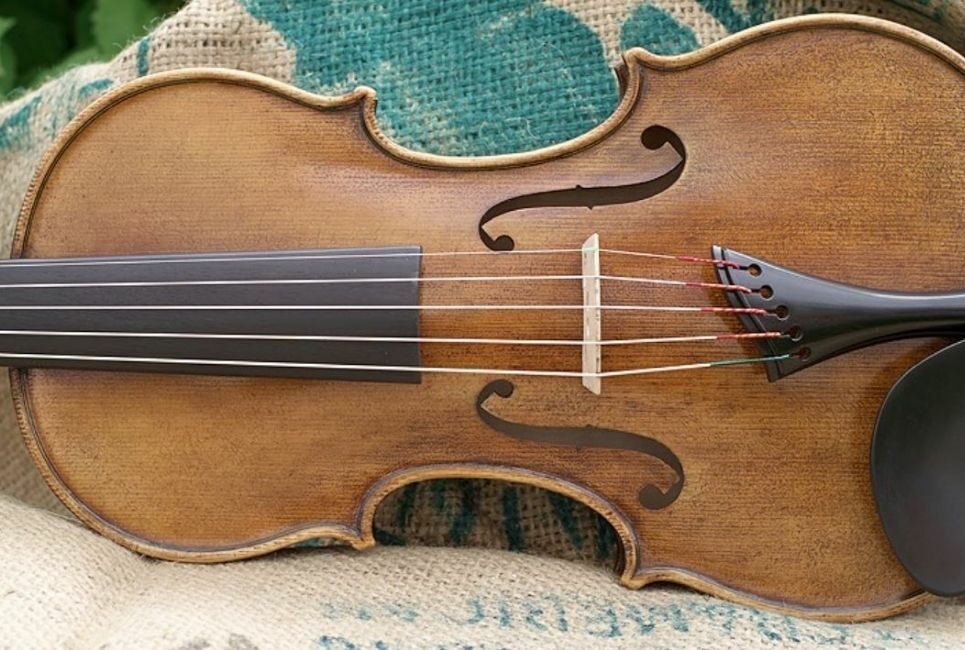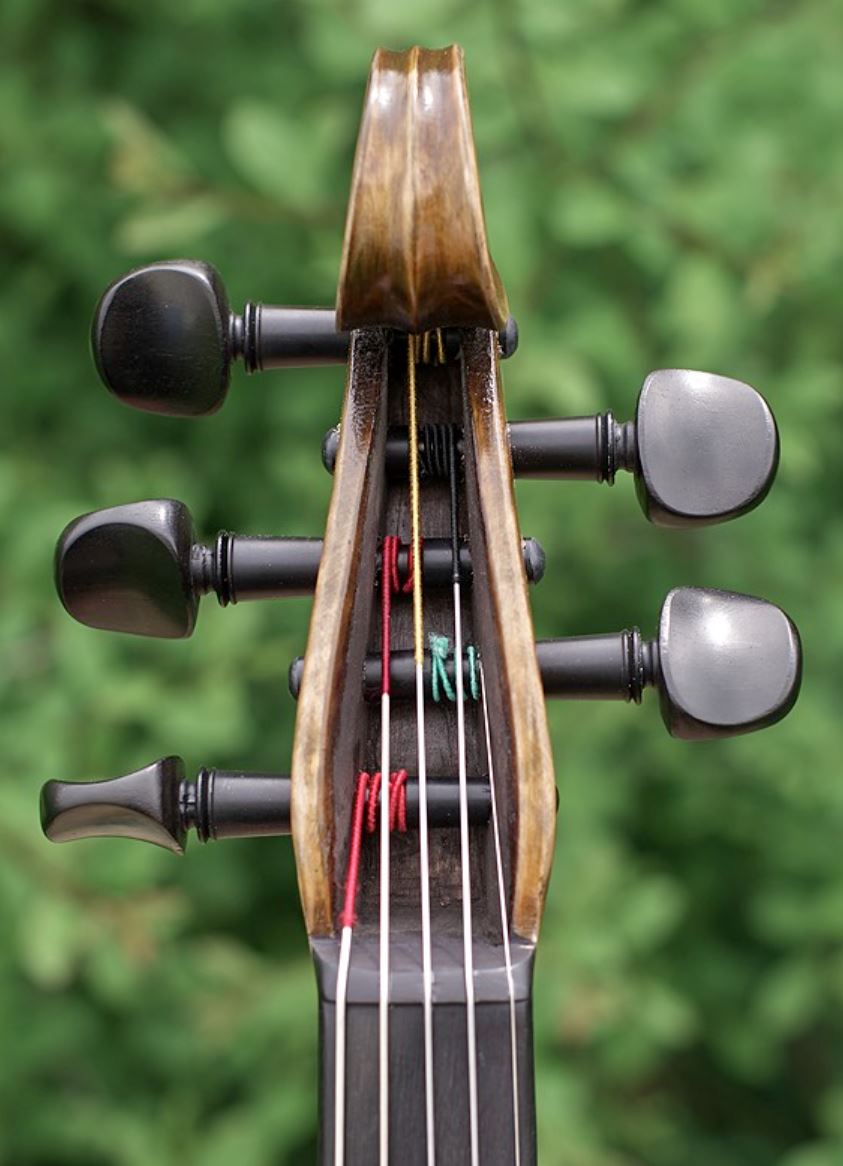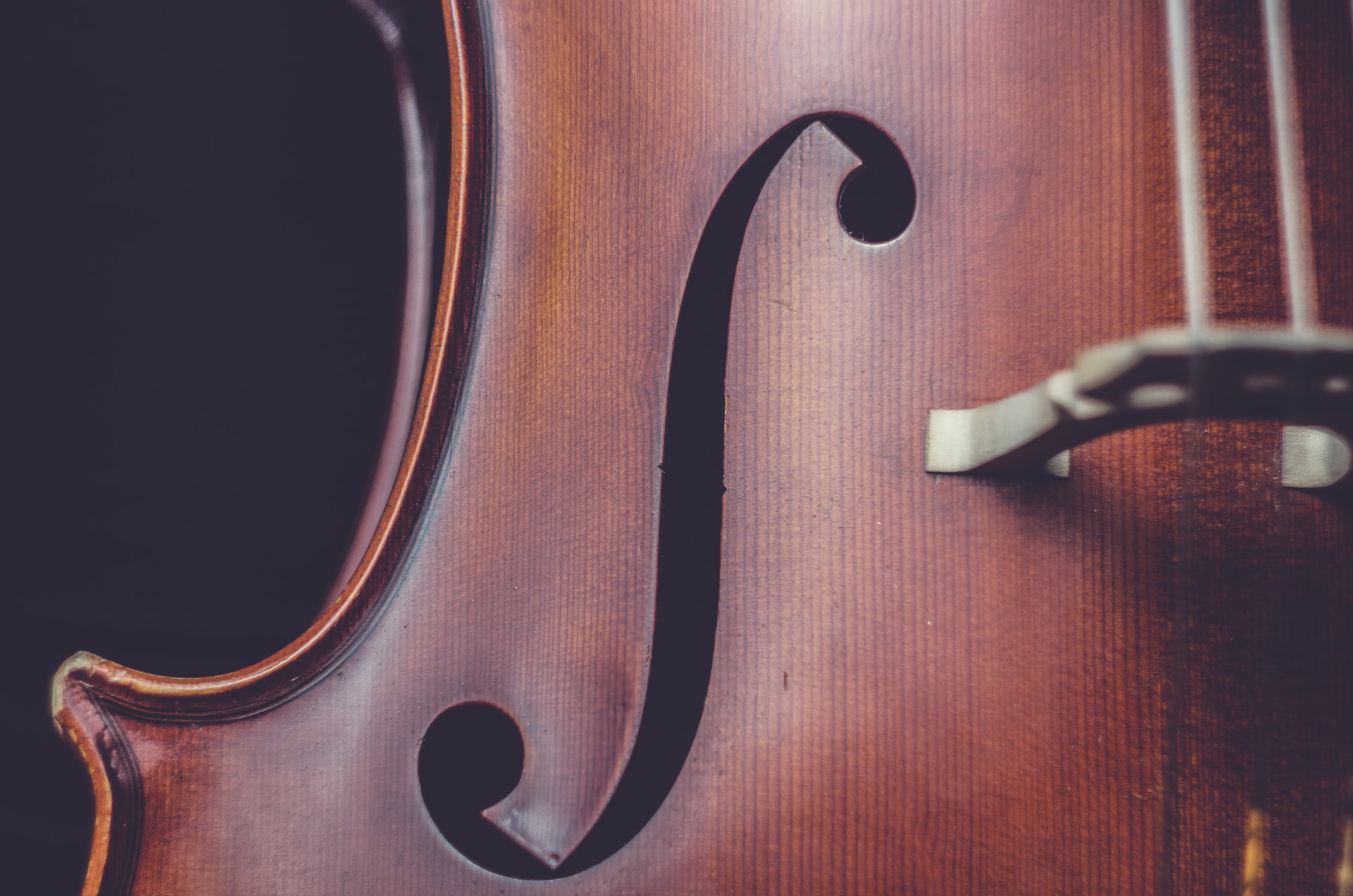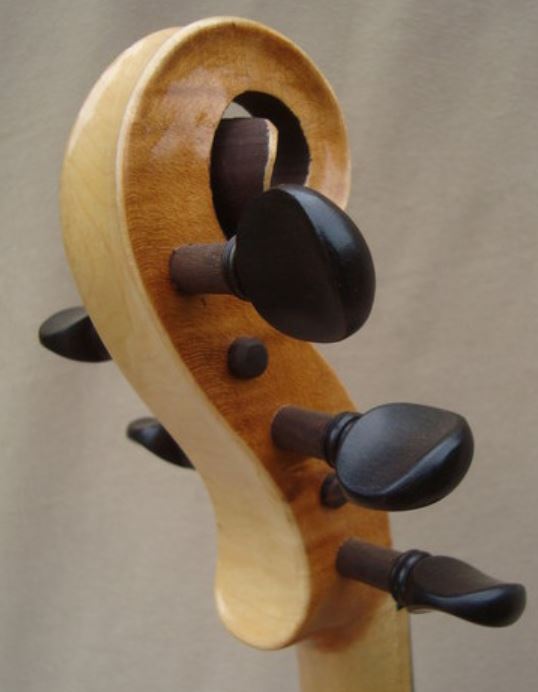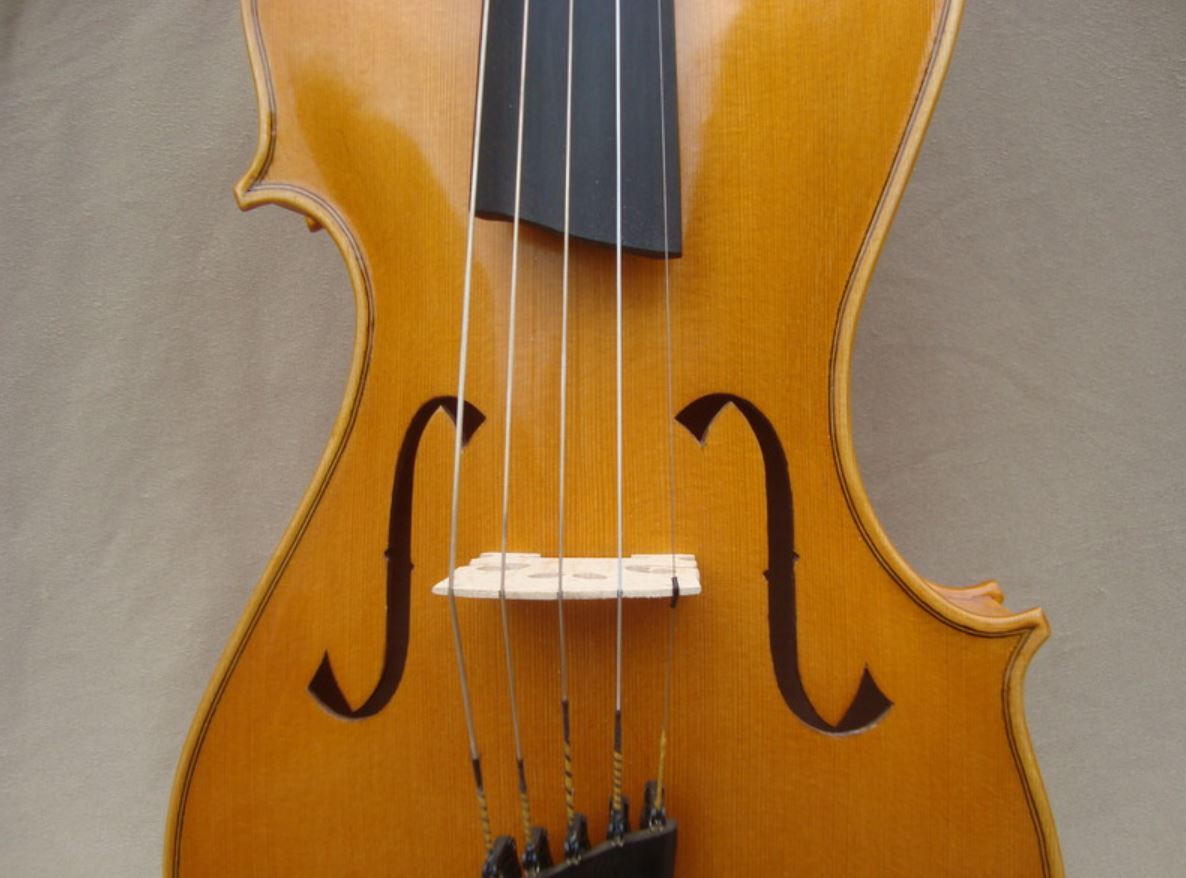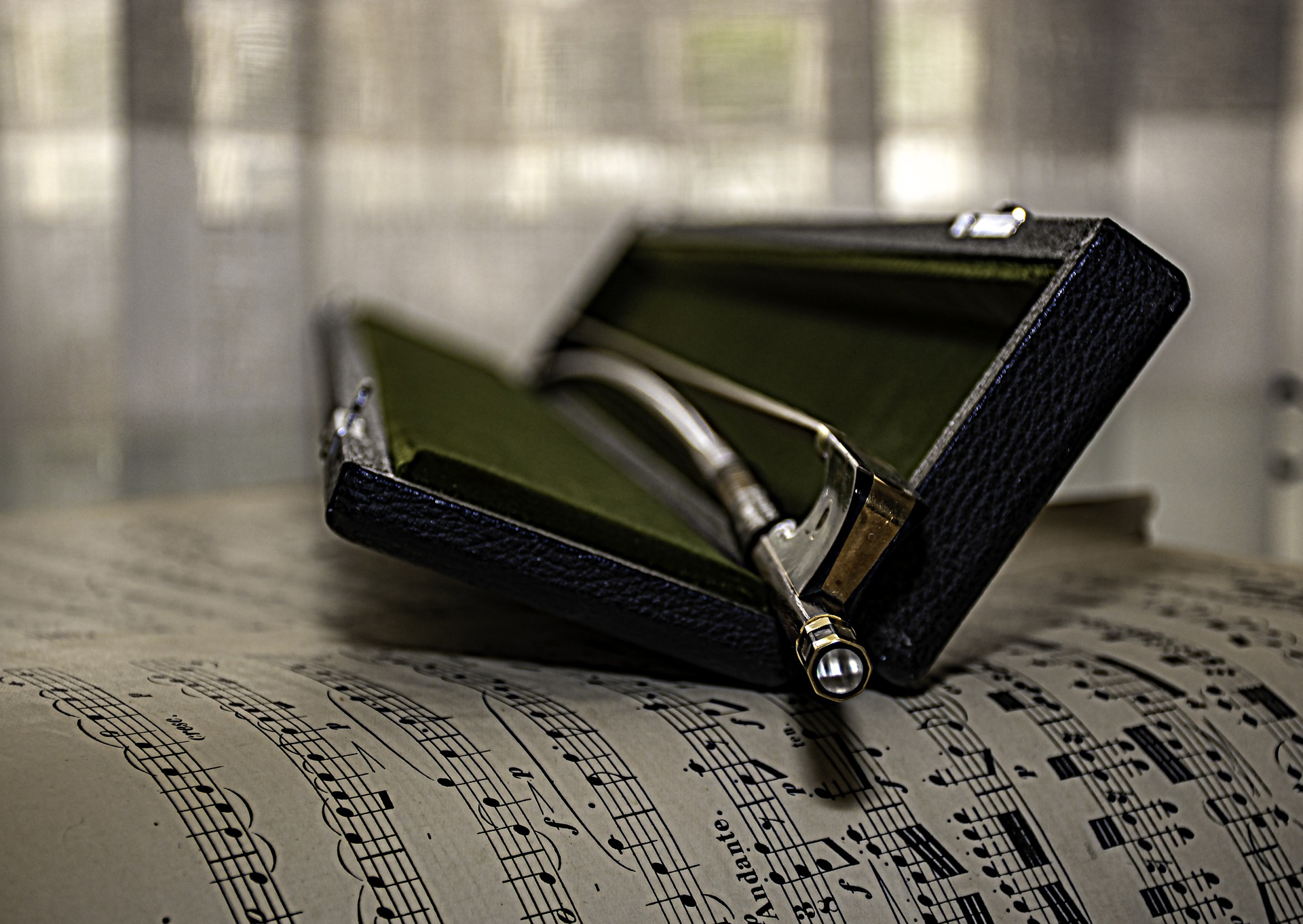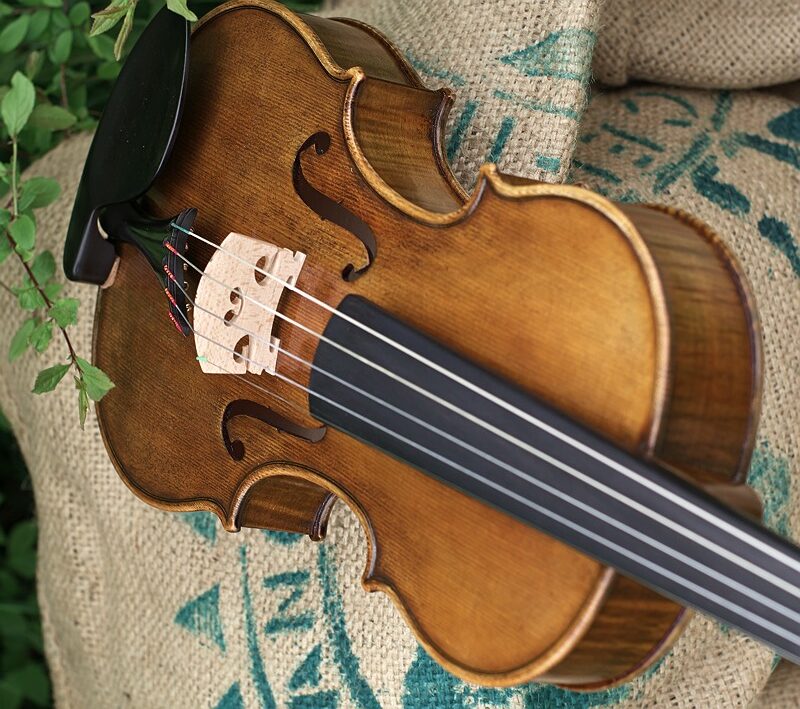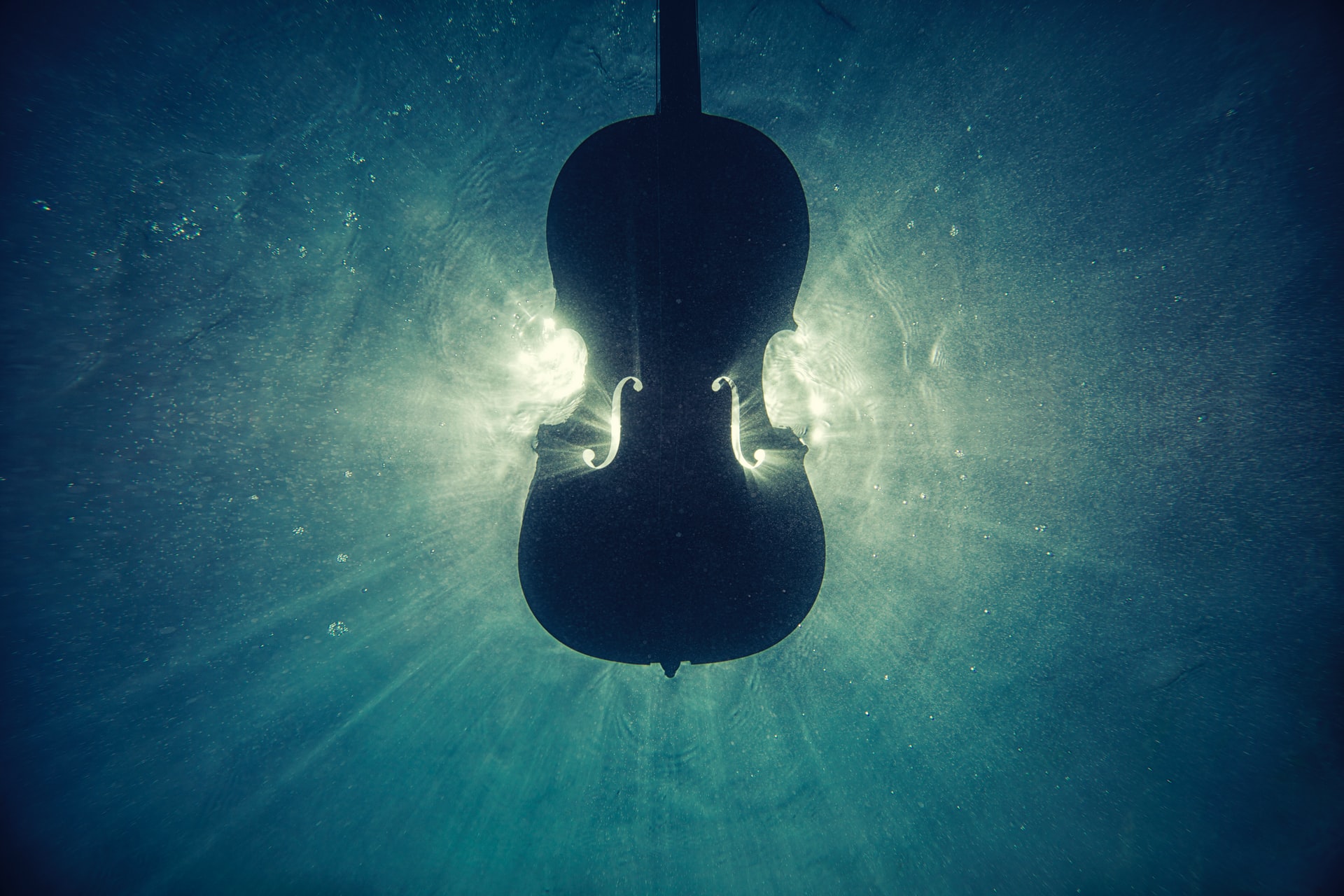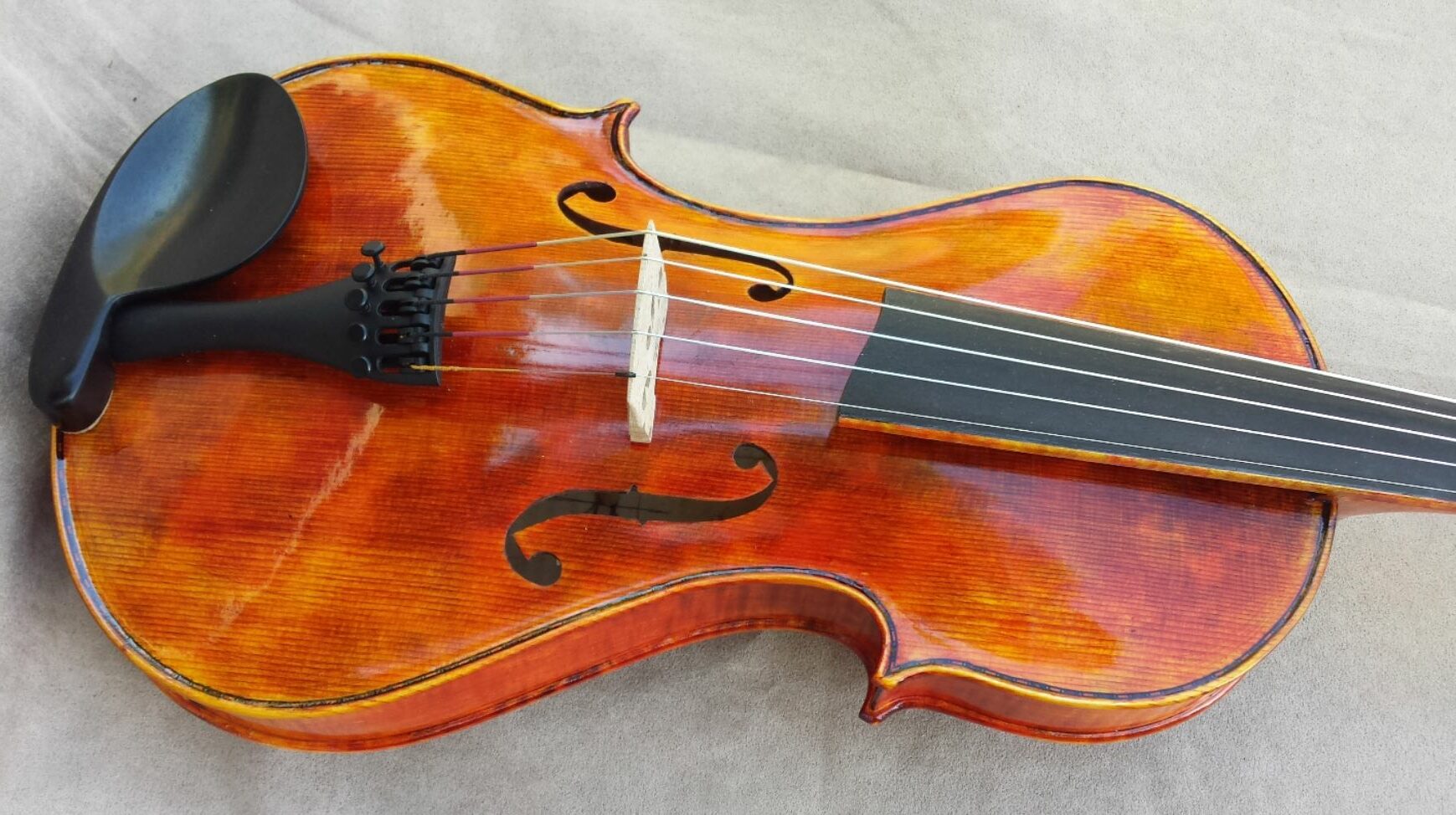- How to Clean Trumpets - May 31, 2022
- How to Find the Best 5 String Violas - May 31, 2022
- Cecilio CCO 200 Review and Guide - April 1, 2022
Purchasing a new stringed instrument can be a confusing process – there are so many variables to consider such as what brand to purchase, what size will fit, whether it should be left or right-handed, and what color to get it in. One thing that makes matters even more confusing is when you are dealing with purchasing instruments that have more strings than they traditionally do, such as finding the best 5-string violas.
Back when I first discovered folk music and learned about the prevalence of five-stringed instruments, I went through this journey, and I learned a lot throughout the process. 5 string violas are not easy to come by, and this is made significantly more difficult by the variety of options out there.
Don’t worry though – if you are too in the niche collection of people who are searching how to find the best 5 string violas, you’re in luck. I’ve compiled everything I know about the subject into the following guide – read on to find out more!
Bottom Line Up Front: Musicians looking for a 5-string viola can find excellent quality options such as Violarama’s ‘Miranda’ pre-built viola, sporting stunning tonewoods, ebony fittings, and a great reputation. However, more experienced violists looking to spend extra cash for higher quality products may be tempted by bespoke crafted options by independent luthiers, although the price and waiting list will reflect the quality!
What Exactly Is a 5-String Viola?
So, what exactly is a five-stringed viola? It’s a good question – unless you’re a seasoned violist, I wouldn’t blame you for not knowing the answer, as it’s a pretty rare instrument. Firstly, let’s forget the strings for a moment – violas are essentially larger violins, contrary to the common misconception that they are smaller. This larger body helps make the instrument bolder and bassier in tone, being able to access lower notes than the violin.
Generally, a five-string viola will be 14″ in size, and as opposed to having the traditional string setup of CGDA, it will have an additional high E to result in the tuning of CGDAE. A five-string viola is somewhat unconventional and therefore the tuning does not strictly have to remain the same – there’s plenty of room for experimentation. However, whilst this is partly true, folk bands will still generally expect your tuning to be compatible with their instruments, and CGDAE will help make that happen.
You might have noticed a slightly unusual contradiction here – violas are larger than violins and therefore produce louder, bolder, and lower frequencies. However, by adding an E string, the instrument can access higher (or lower) frequencies) too. Ultimately, this allows musicians to find a balance between the higher timbres of a violin and the lower tones of a viola, it’s a fantastic hybrid option!
Why Purchase a 5-String Viola?
Before we start talking about the qualities that you should be searching for in any 5-string viola that you consider, let’s take a moment to consider why anyone would want a 5-string viola in the first place. After all, violas are only supposed to have four strings, right? What’s with the extra string?
If you’re reading this as a fan of classical music, I don’t blame you for the confusion. I was completely baffled when I first started playing the viola and would occasionally see instruments with five strings. I had never seen any western notation that provided this five-string approach and I didn’t see any need for the instrument to have an extended range.
However, everything made a lot more sense when I started listening to folk music. I have a cousin who lives in Ireland who is also a musician, and he one day invited me to come and jam with his band. I was thrilled about this opportunity but didn’t think I owned an appropriate instrument to contribute. However, I was just told to bring a fiddle.
Back when this happened, I hadn’t started learning the viola yet – only the violin. I was aware that people used the names violin and fiddle interchangeably depending on genre, so I simply brought my four-string violin, much to the rest of the band’s dismay. Stringed instruments almost always have additional strings in folk music circles as the music is a lot more freeform and based around solos, and that is exactly what the five-string viola excels at.
So, does all this mean that being in a folk band is the only reason to purchase a 5-string viola? Absolutely not – whilst it’s undeniable that folk music has always shown a particular passion for the instrument, you shouldn’t limit yourself to these creative boundaries. The whole reason people use five-stringed instruments in the first place is that someone dared to bring one for the first time. I wouldn’t exactly recommend bringing a five-stringed viola to your next orchestral concert, but feel free to bring it to just about anything else – who knows what musical boundaries you could expand!
Main Qualities To Search For In a 5-String Viola
OK – now that we have taken a look at exactly what a 5-string viola is and why you might consider purchasing one, let’s assume for a minute that you are in the market for buying one. You’re going to need to think about a few things before you rush to a purchasing decision because, although the instrument is fairly rare, there is still plenty of bad options that you’ll have to sift out. Don’t worry though, because I’m going to help you with that. Let’s take a look.
Zero Compromise on Quality
The first thing that I feel is necessary to consider when searching for the best 5 string violas is to ensure that there are zero compromises on quality. When I say compromise, I’m talking about the fact that the instrument has five strings instead of four.
That might sound like an unusual thing to worry about, but trust me – this kind of thing is prevalent in the music instrument industry. It’s a sad fact that bad instrument brands will often exploit the fact that people look for niche instruments such as five-string violas, left-handed guitars, or fretless basses. They will see a gap in the market and create a lazy option for punters in the market for these niche instruments, focussing on providing the option to make a quick buck and taking zero time to consider how the instrument should be made
Believe it or not, I once saw a “five-string viola” which was just a lazy modification of a four-string viola. They had taken the body of a traditional viola, drilled some additional holes and widened the existing ones, and somehow managed to squeeze five strings into the space that four would traditionally occupy. I’m all for a bit of DIY, but this was just outrageous.
When purchasing a five-string viola, or any niche instrument for that matter, you should always ensure that the instrument has been custom-made to fit its purpose. Lazy modifications are never going to sound as good, and it’s quite likely that they will completely fall apart in the long run. Never compromise on quality for a niche instrumental design, period!
Tonewoods
The next thing that I wanted to mention is considered by many stringed instrument experts to be the most important part of any five-string viola – tonewoods. As you may already know, tonewood is the name given to the types of wood that stringed instruments are made from, facilitating flawless and rich frequency resonation.
The best tonewoods for five-string violas remain the same as those for four-string violas, violins, and cellos too – generally, this will consist of maple or spruce, depending on the quality and price of the instrument. These woods are used because they are dense, strong, and hard, providing an optimal environment for the resonating of frequencies. Ebony is also commonly used to produce fingerboards, tailpieces, pegs, and other fittings, and this will significantly raise the price of the instrument. However, this doesn’t have anything to do with tone – ebony is simply a sought-after and good-looking wood.
If you’re looking for a decent quality five-string viola then any instrument using these tonewoods will do just fine. However, if you were looking to splash some cash on something of a more noble composition, you would want to ensure that your tonewoods were sourced from high-altitude forests. This means that the trees would take significantly longer to grow which is known to improve the grain and quality of the wood used. However, unless you have money to burn, this is all a bit unnecessary.
A Size That Fits
Next up is a quality that must not only be considered when purchasing a five-string viola but for any instrument in the world – size. Many people are under the misconception that instruments come in only one or two sizes, with adult sizes being the primary, and child sizes being the other. However, this is not the case – all instruments come in different sizes to allow people of different ages and heights to learn them.
When it comes to five-string violas, the sizing system is very similar to traditional four-string violas, violins, and cellos. The primary size you will find will be 4/4 or “full-sized”, with 7/8 providing a slightly smaller alternative. This is usually a great option for fully grown adults who are slightly shorter than average, or for teenagers that are yet to fully grow out. There are plenty of other sizes such as ¾, 1/2, ¼, and even 1/8 that are appropriate for younger children. However, it must be said that these sizes are much more commonly found in application to traditional instruments such as four-string violins. I don’t think I have ever come across a 1/8 five-string viola!
One thing is for sure though – you should never cheap out when it comes to size. You should spend plenty of time checking every five-string viola listing to ensure that its size will be appropriate for you, and you absolutely should visit music stores near you to test out a variety of sizes. Size isn’t just a preference – it’s essential to have an instrument that is comfortable for you to play, and if it’s not comfortable, you simply are not going to want to practice the instrument.
Accessories
Something that is often forgotten about when people purchase instruments is the accessories that accompany them. People often associate things such as plectrums, effects pedals, and cables with guitars, but accessories are just as important for violists. You’re going to need a bow, strings, a travel case, a stand, music books, rosin… the list goes on!
However, the most important accessory in my opinion for five-string violists is a decent tuner. You should ignore anyone that claims that you do not need a tuner and that you should simply use ‘perfect pitch’. The majority of people that claim they can tune their viola by ear are straight-up liars, and there is absolutely nothing to be ashamed about when using a tuner.
You should ensure that your viola at least comes with strings and a bow so that you can get started playing the instrument right away. However, having a tuner is going to be invaluable too, even if it is just a mobile application tuner. Just ensure that it is calibrated for five-string violas, and you’ll be able to tune up straight away!
Reviews
My final point is a quick one – always read reviews. If you’re a frequent online shopper then you will already know all about this, but I still know plenty of people who forget the vital step. Anyone can sell a five-string viola online, and who knows, they may not have your musical performance within their best interests. As a result, it’s important to look out for poor-quality violas, scams, and dodgy customer service.
Almost every online viola retailer will have a review system for you to investigate, so make sure you use them. However, if you come across a first-party seller, they may not include this feature. If you come across such a viola retailer, it’s going to be important that you research the brand. Search for reviews of the specific viola online and see what other people think about the brand. I’m sure things will be fine, but you never know what information you may dig up!
My Top 3 Recommendations for the Best 5-String Violas
Phew – that sure was a lot of information to cover. You should be all good to go on your five-string viola adventure at this point, but I’ve decided to make things a little easier for you by providing you with my three top recommendations. Who knows, there could be a viola here that works perfectly for you!
Violarama ‘Miranda’ 5-string 15 1/16th” Viola
The first 5-string viola on my recommendation list comes from the UK-based Violarama Company, the ‘Miranda’ 5-string 15 1/16th” viola. This is one of the only 5 string violas that I’ve found in multiple locations on the web, and that’s usually a good sign. It’s easy to get hold of, online retailers often provide electroacoustic pickup fitting for it, and there are plenty of positive reviews going for it.
The body is made from spruce with an ebony chinrest, endpin, and pegs, and the golden spirit finish gives this instrument a beautiful aesthetic. It’s generally prestrung in the classic ADGCE format, but an alternative with the low F, as opposed to the high E, is also available.
Pros
- Easy to find being sold at various online retailers
- Available in both ADGCE and FADGC tuning formats
- Gorgeous Golden Spirit finish
- Ebony fittings
- Available as both acoustic and electroacoustic
Cons
- Quite expensive, although the quality is reflective of this
Oliver’s 5-string Violas
I mentioned earlier that 5 string violas can be difficult to come by, and as a result, it is common that instead of finding them stocked in online stores, they will instead be made to fit each customer’s needs. That last Violarama example was an exception, but it is much more common to find five-string violas produced case-by-case by companies such as Oliver’s.
I first found the website for Oliver’s instruments a couple of years ago, and it is a goldmine for unique instruments. The luthier behind the company specifically works on five-string violins, violas, cellos, and double basses, and not only has he built a business around this, but you can sense the immense passion he has for the instruments.
Have a flick through his five-string violas, and you’ll quickly see that this dude puts a ton of love into his craft, picking only the best tonewoods, and ensuring that each five-string instrument has no compromise in terms of quality. The only negative here is that prices are quoted on a case-by-case basis, and the violas do not come with bundles or reviews like more mainstream violas do.
Pros
- Handcrafted by a passionate viola luthier
- Designed specifically to be five-stringed
- Funds a small business
- Built out of prime choice tonewoods
Cons
- Lacks the accessory bundles and securities that come with ordering from a mainstream viola manufacturer
- Each viola is custom made, and therefore purchasing one can take a while
- Pricing is different for every viola
Tim Phillips 5 Stringed Violas
The final 5 stringed viola that I think is worth investigating is the range produced by Tim Phillips, a luthier providing similar services to Oliver’s violas previously mentioned. These violas have been on my radar for a while primarily due to their gorgeous aesthetic – the luthier tends to use tonewoods that are lighter in color to produce bright-looking violas that stand out in the crowd.
They feature ebony fittings, and hand-carved bodies, but most importantly can be designed on demand. This means that shapes, finishes, and additional details can be provided when requesting a quote from the luthier, resulting in a five-stringed viola that is truly unique to your collection. The only problem with this is that these bespoke violas are significantly more expensive, and pre-carved examples are typically rare to come by on the site. However, if you’re willing to wait and have the cash to splash, this is going to be well worth the wait!
Pros
- Made bespoke for every customer
- Gorgeous light tonewoods
- Ebony fittings included on every viola
- Hand-carved
Cons
- The bespoke nature of the 5 string viola makes them difficult to get hold of
- Long waits are typical, even after a successful order
- Very expensive due to the personalized nature of the instrument
FAQ
Well, that just about brings me to the end of my guide to finding the best 5 string viola. It can be a pretty difficult process, so hopefully, the criteria, tips, and recommendations provided have provided you with a starting point. Now, before we finish things off, let’s take a look at the answer to four of the most common questions I hear about five-string violas!
Answer: Most five-string violas follow the tuning of CGDA, with an additional high E, but some violists prefer to set their instrument up with a low F instead of a high E.
Answer: Contrary to popular belief, violas are simply larger than violins, thus producing lower tones and more bass-heavy frequency response.
Answer: When searching for a five-string viola, you should always ensure that it does not compromise on quality simply because it has five strings, including high-quality tonewoods, sizing options, and accessories.
Answer: It is undeniable that the customizable details associated with bespoke five-string violas from independent luthiers are better than pre-built “one size fits all” options, but you will have to pay significantly more, and the waiting lists can be long.
Final Thoughts
Well, that brings us to the end of this guide to finding the best five-string violas. Finding such a niche instrument can often feel like a significant challenge, but with perseverance and reference to this guide, I am sure that you will find what you are looking for in no time
In my opinion, you can’t go wrong with an option such as the Violarama ‘Miranda’ 5-strinviola – it’s a stunning instrument that can be bought outright without any trouble, and it won’t break the bank either. However, if you’re looking for something a bit more personal and special, I wouldn’t blame you for searching for bespoke options such as those provided by independent luthiers such as Oliver’s and Tim Phillips. I wish you all the best on your journey!
Looking for more interesting readings? Check out:

